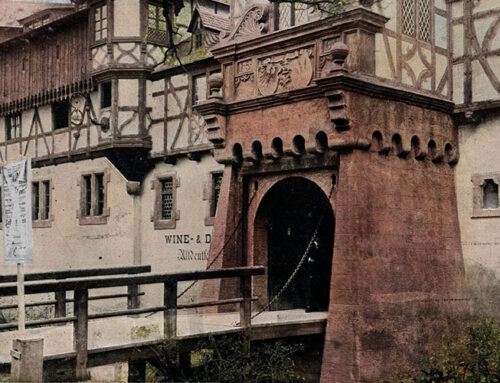A massive block of vibrant blue azurite and green malachite that was first exhibited at the 1893 World’s Fair in Chicago is back on display in the American Museum of Natural History (AMNH) in New York. Among the approximately 5,000 pieces on display in their new Allison and Roberto Mignone Halls of Gems and Minerals, which reopened on February 17, 2021, is a popular artifact from the Fair that has come to be known as the “Singing Stone.”
The five-foot-tall, four-ton block of azurite, malachite, and copper ore was first displayed in the Arizona section of the Mines and Mining Building at the Columbian Exposition. The Copper Queen Consolidated Mining Company extracted the block from their Czar Mine in 1891 and immediate formed plans to show it in Chicago. The Chicago Daily Tribune reported on March 13, 1891 that:
“The Copper Queen Company will exhibit at the World’s Fair a mammoth specimen of ore from its mines. Work of chiseling the piece out has been going on for some time. It is estimated that when ready for shipment it will weigh five tons and be in the shape of a brick.”
An article on “Mining at the Columbian Exposition” in the June 10, 1893, issue of The Engineering and Mining Journal reported on the Arizona display, noting that “the large trophy in the center is a square block of azurite from one of the Arizona mines, which is supported by a base of malachite, making a beautiful contrast of color.”

The Arizona exhibit in the Mines and Mining Building at the 1893 World’s Columbian Exposition. The massive ore from Bisbee, Arizona, can be seen in the center underneath a glass case. [Image from The Engineering and Mining Journal, June 10, 1893.]
A vintage photo of two miners posing with the treasure from Bisbee can be viewed here.
After the close of the Columbian Exposition, the specimen was donated to the American Museum of Natural History, where it reportedly earned the nickname “Singing Stone” because of an unusual sound made due to the museum’s air handling system. Vendl notes that only part of the specimen from the 1893 Exposition is presently on display in the AMNH.

The “Singing Stone” in its current home at the American Museum of Natural History in New York. [Image from the AMNH.]
UPDATE: The Museum has posted a YouTube video showing the specimen and offering a brief story about it.






Very interesting stone. Is more known about it? Did they pull out other large pieces like that?
I don’t know more about this interesting ore specimen, but you might check out the Bisbee Mining & Historical Museum at https://bisbeemuseum.org/